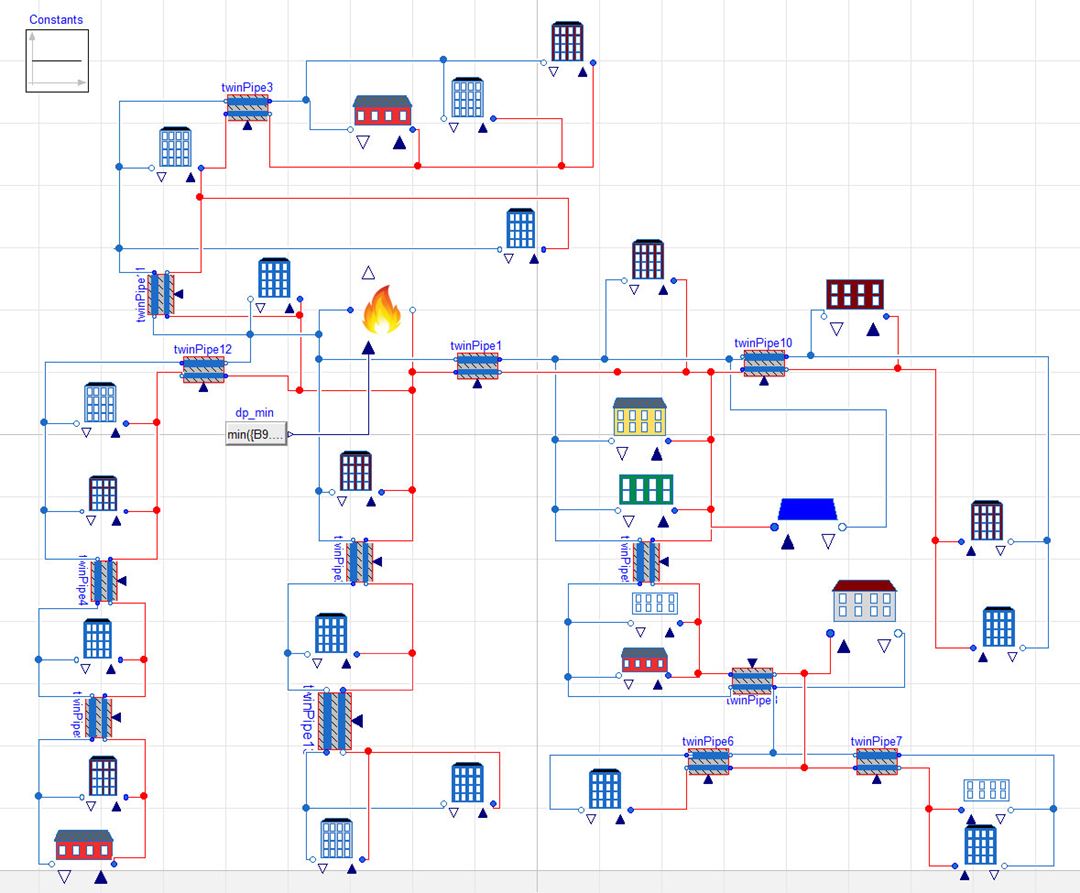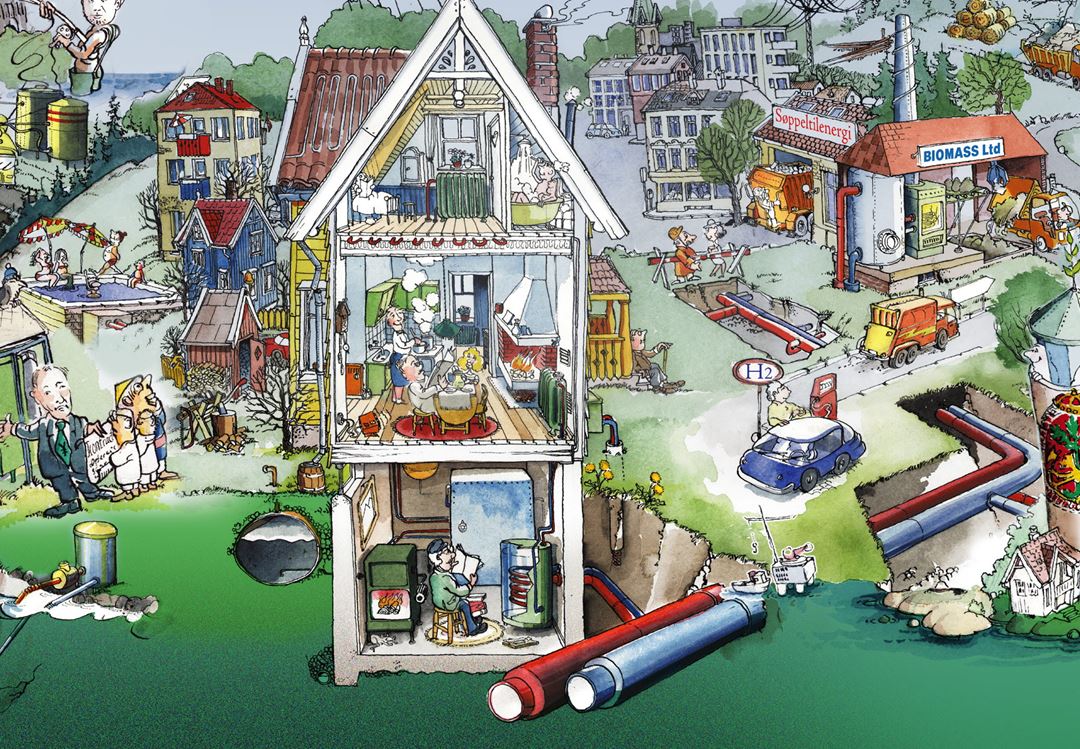Buildings account for more than 40 % of the global energy consumption, and as much as one third of the global greenhouse gas emissions. If energy efficiency in the buildings sector is not improved, the current energy demand is expected to rise by 50 % by 2050.
In order to reduce the overall primary energy demand, both reducing the energy use as well as shifting to renewable energy sources is required.
In order to reduce the distribution heat losses, and to be able to utilize waste heat from buildings and renewable heat sources in a more efficient manner, lower distribution temperatures than those utilized in today's district heating network are needed.
In the project Development of Smart Thermal Grids (DSTG), a tool for modelling a local thermal grid for a building area or district is being developed. The tool will allow to study the benefits of low-temperature heat distribution; as well as to study the effect of having multiple heat sources, thermal storage and buildings with different heat demands coupled in the same network. In addition, the costs and environmental impact of the different heat supply systems will be evaluated. The tool will provide support for the project partners, Statkraft Varme and the city of Trondheim municipality, when designing the heating and cooling supply for new building areas. As a first case study, a heating network supplying heat to Brøset, a future district to be built in Trondheim, has been modelled.

The simulation results so far demonstrate that the heat losses in the network can be reduced by up to one third by reducing the distribution temperatures. Furthermore, lower distribution temperatures reduce the demand for peak heating devices, often based on fossil fuels, hence reducing the environmental impacts of the district heating system. Current research work focuses on including local heat production from renewable and waste heat sources, as well as thermal storage, into the thermal grid model.
This is an Innovation Project for the indstry partially financed by The Research Council of Norway

